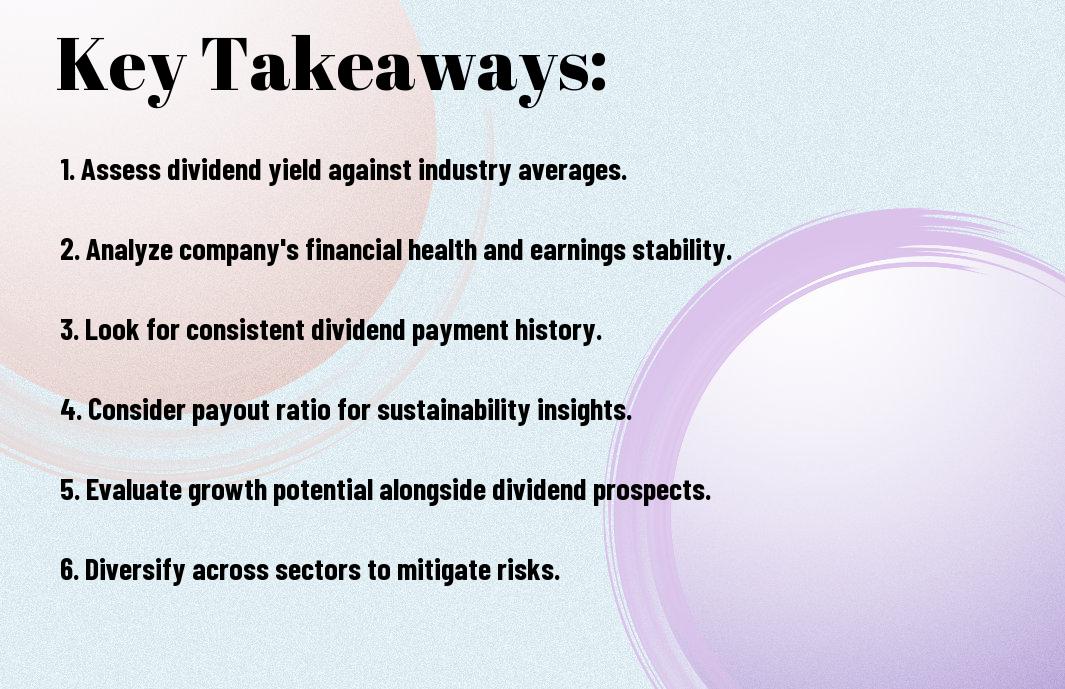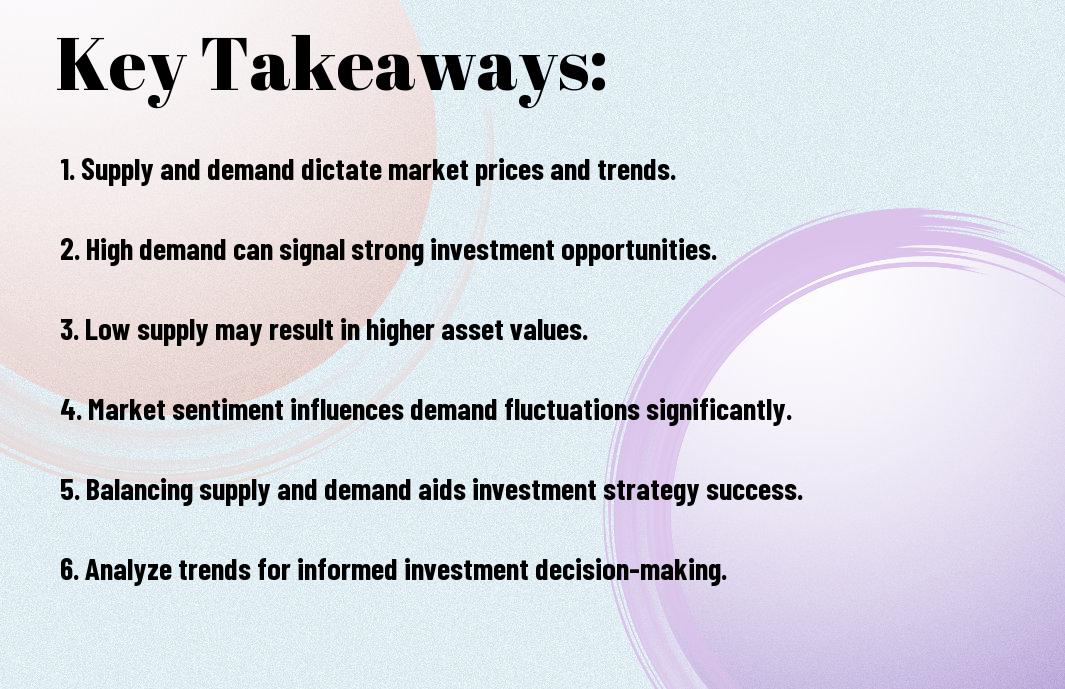Over time, understanding the role of taxes in your investment planning can significantly influence your overall financial success. As you navigate the complexities of various investment vehicles, it’s imperative to recognize how tax implications can affect your returns and strategies. By incorporating tax-efficient methods into your planning, you can maximize your wealth accumulation and minimize potential liabilities. This blog post will guide you through important tax considerations to help you make informed decisions for your investment portfolio.
Key Takeaways:
- Tax Implications: Different investment vehicles have varied tax treatments, which can significantly impact your overall returns.
- Long-Term vs. Short-Term Gains: Understanding the tax rates on capital gains is crucial for determining the optimal holding period for your investments.
- Tax-Advantaged Accounts: Utilizing accounts like IRAs or 401(k)s can help minimize tax liabilities and maximize investment growth.

Understanding Different Types of Taxes
Your investment planning requires a solid understanding of the different types of taxes that can affect your returns. Here are the primary tax categories you should familiarize yourself with:
- Income Tax
- Capital Gains Tax
- Dividend Tax
- Property Tax
- Estate Tax
Perceiving how these taxes interact with your investment strategy can enhance your financial growth. For more insights, check out this Tax-Efficient Investing: A Beginner’s Guide.
Income Tax
At the heart of your investment returns are the ordinary income taxes you may have to pay on assets that generate income, such as interest, dividends, and rental income. The tax rate applied can significantly impact your overall earnings, thus influencing your investment decisions.
Capital Gains Tax
Among the taxes that can affect your investment outcomes, capital gains tax is notable as it applies to the profit from the sale of assets. When you sell an investment for more than you paid for it, any profit counts as a capital gain and may be subject to taxation.
Different holding periods will determine whether you owe short-term or long-term capital gains tax. Short-term gains typically apply to assets held for one year or less and are taxed at ordinary income rates, while long-term gains benefit from preferential lower tax rates for assets held longer than one year. Understanding these distinctions can aid in effective investment planning.
Tax-Advantaged Investment Accounts
Clearly, tax-advantaged investment accounts are crucial tools for maximizing your investment growth while reducing your tax liability. These accounts allow you to take advantage of various tax benefits, whether through tax-deferred growth or tax-free withdrawals, making them a smart choice for any investor looking to optimize their financial strategy.
Individual Retirement Accounts (IRAs)
One popular type of tax-advantaged account is the Individual Retirement Account (IRA). IRAs offer you the flexibility to choose between traditional and Roth structures, each delivering unique tax benefits. With a traditional IRA, your contributions may be tax-deductible, and your investments grow tax-deferred until you start receiving withdrawals. In contrast, with a Roth IRA, you contribute after-tax dollars, allowing your investments to grow tax-free and enabling tax-free withdrawals during retirement.
401(k) Plans
About 401(k) plans, these employer-sponsored retirement accounts provide an excellent avenue for you to save for retirement while benefitting from tax advantages. Contributions made to a traditional 401(k) are pre-tax, reducing your taxable income for the year, and allowing your investments to grow tax-deferred. Alternatively, many employers now offer Roth 401(k) options, allowing you to invest after-tax income for tax-free withdrawals later in life. Furthermore, some employers may match a portion of your contributions, providing you with added incentive to maximize your 401(k) savings.
Accounts like 401(k) plans also feature higher contribution limits compared to IRAs, making them powerful tools for building retirement savings. Additionally, your employer’s matching contributions can significantly increase your total investment, helping you reach your retirement goals faster. It’s crucial to explore the specifics of your 401(k) plan, including any investment options and fees, to ensure you are making informed decisions that align with your long-term financial strategy.

The Impact of Tax Brackets on Investment Gains
Not understanding how tax brackets affect your investment gains can lead to unexpected tax liabilities. The higher your income, the more you may pay in taxes on your investment profits. To dive deeper into Tax Basics for Investors, it’s imperative to have a strong grasp of these dynamics to make informed decisions that align with your financial goals.
Progression of Tax Rates
Between various income levels, tax rates gradually increase, impacting how much of your investment return you actually retain. This progression means that as your earnings elevate, you may find yourself falling into higher tax brackets, which could diminish your net gains from investments.
Strategies for Mitigating Tax Burden
To reduce your tax burden when investing, consider employing strategies that align with your financial objectives. This might include tax-loss harvesting, utilizing tax-advantaged accounts, or choosing investments with lower tax implications, all designed to keep more of your hard-earned money working for you.
Considering the complexities of tax implications on your investments, it is wise to adopt strategies that can help offset your tax liability. For instance, you can maximize contributions to retirement accounts like IRAs or 401(k)s, as these often provide tax benefits. Additionally, focusing on long-term investments may qualify your gains for lower tax rates. Always consult with a tax professional to explore tailored strategies that best suit your financial situation and help enhance your overall investment plan.
Tax Loss Harvesting as an Investment Strategy
All investors can benefit from tax loss harvesting, a strategy that enables you to reduce your taxable income by offsetting capital gains with losses in your portfolio. This proactive approach can enhance your overall investment returns by effectively managing your tax liabilities, thus allowing you to reinvest those savings back into your portfolio. By regularly evaluating your holdings, you position yourself to make informed decisions that align your investment strategy with your financial goals.
Definition and Benefits
Behind the concept of tax loss harvesting lies the opportunity to sell underperforming investments at a loss, which can offset taxes on gains realized elsewhere in your portfolio. This strategy not only helps minimize your tax burden but also encourages a disciplined investment approach, allowing you to reevaluate and make necessary adjustments to your asset allocation.
Implementation Tips
After you decide to implement tax loss harvesting, it’s important to stay methodical. Consider the following tips:
- Track your investments regularly to identify potential losses.
- Utilize a tax-efficient investment account.
- Be mindful of the wash sale rule, which prohibits repurchasing the same security within 30 days.
- Reinvest the proceeds in similar, but not identical, securities to maintain your investment strategy.
After you have established a plan, ensure you regularly analyze your portfolio. You should also consider the following:
- Use tax software or consult a financial advisor to optimize your strategy.
- Create a schedule for periodic reviews and adjustments.
- Stay informed about changes in tax laws that could affect your strategy.
- Be prepared to hold investments longer to avoid unnecessary trading costs.
At the end of your evaluation, always ensure that your overall investment goals align with your tax strategy to maximize both financial growth and tax efficiency.
Estate Taxes and Their Relevance in Investment Planning
Keep in mind that estate taxes can significantly impact your investment planning. When you pass on your assets, these taxes can take a substantial portion of your estate, reducing what you intend for your heirs. Understanding estate taxes is imperative to ensuring your investments do not diminish your beneficiaries’ inheritance.
Overview of Estate Taxation
An estate tax is a levy imposed on the net value of the estate of a deceased person before distribution to the heirs. This tax typically applies when the total value of the estate exceeds a certain threshold set by law. Knowing your estate’s potential tax liability enables you to make informed decisions about your investments and how they may affect your beneficiaries.
Strategies for Minimizing Estate Taxes
Taxes can be reduced through several strategies, allowing you to maximize the wealth transferred to your heirs. Effective approaches include making annual gifts within the tax-free limits, establishing trusts to shield assets, and utilizing charitable donations to offset taxable income. These methods not only lower your taxable estate but also provide you with greater control over how your assets are distributed.
Their implementation requires careful planning and consideration of your unique financial situation. Consulting with a tax professional can help you tailor these strategies to fit your specific needs. By proactively managing your estate, you can preserve more wealth for your beneficiaries while ensuring compliance with tax regulations.
Conclusion
With this in mind, understanding the role of taxes in investment planning allows you to make informed decisions that can enhance your overall financial strategy. By considering tax implications on your investments, you can optimize your returns, choose appropriate accounts, and strategize around tax-efficient practices. Staying proactive about tax planning will help you maximize your wealth accumulation and better align your investment goals with your financial needs.
Q: How do taxes impact investment returns?
A: Taxes can significantly influence the overall return on an investment. When you sell an asset for a profit, you may be subject to capital gains taxes, which can diminish your earnings. The rate at which these taxes are applied can vary depending on factors such as the duration for which the asset was held and the investor’s income bracket. Short-term capital gains, for instance, are typically taxed at higher ordinary income rates, while long-term capital gains may enjoy reduced rates. As a result, understanding the tax implications of selling or holding an investment is necessary for effective investment planning.
Q: What strategies can investors use to minimize tax liabilities?
A: Investors can employ several strategies to reduce their tax burdens. One common approach is tax-loss harvesting, where you sell underperforming investments at a loss to offset capital gains realized from other investments. Additionally, utilizing tax-advantaged accounts such as IRAs and 401(k)s can provide significant tax benefits. Contributions to these accounts may be tax-deductible, or, in the case of Roth accounts, qualified withdrawals can be tax-free. Furthermore, holding investments for longer periods to benefit from lower long-term capital gains rates can also be an effective strategy to minimize tax liabilities.
Q: What role do tax brackets play in investment planning?
A: Tax brackets are necessary in shaping an investor’s strategy, as they determine the effective tax rate applied to income, including investment income. The progression of tax brackets means that as an individual’s income increases, a portion of their investment returns may be taxed at higher rates. This variation can influence decisions such as when to sell investments or how much to withdraw from retirement accounts. Understanding one’s current and expected future tax brackets allows investors to optimize their portfolio and align their investment strategy with their tax situation, which can lead to better after-tax returns.









